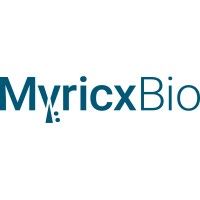预约演示
更新于:2025-05-07
NMT1
更新于:2025-05-07
基本信息
别名 Glycylpeptide N-tetradecanoyltransferase 1、HsNMT1、Myristoyl-CoA:protein N-myristoyltransferase 1 + [7] |
简介 Adds a myristoyl group to the N-terminal glycine residue of certain cellular and viral proteins (PubMed:22865860, PubMed:25255805, PubMed:32686708, PubMed:34999170, PubMed:9353336, PubMed:9506952). Also able to mediate N-terminal lysine myristoylation of proteins: catalyzes myristoylation of ARF6 on both 'Gly-2' and 'Lys-3' (PubMed:32103017, PubMed:32111831). Lysine myristoylation is required to maintain ARF6 on membranes during the GTPase cycle (PubMed:32103017). |
关联
10
项与 NMT1 相关的药物作用机制 NMT1抑制剂 [+2] |
在研适应症 |
非在研适应症 |
最高研发阶段临床2期 |
首次获批国家/地区- |
首次获批日期1800-01-20 |
靶点 |
作用机制 NMT1抑制剂 |
非在研适应症- |
最高研发阶段临床前 |
首次获批国家/地区- |
首次获批日期1800-01-20 |
作用机制 HER2拮抗剂 [+1] |
非在研适应症- |
最高研发阶段临床前 |
首次获批国家/地区- |
首次获批日期1800-01-20 |
2
项与 NMT1 相关的临床试验NCT06613217
A Phase 1 Study of Oral PCLX-001 in Relapsed/Refractory (R/R) Acute Myeloid Leukemia (AML)
This is a dose-finding study of oral zelenirstat (PCLX-001) in patients with R/R AML. There are two parts to the study: Dose Escalation and Dose Expansion.
开始日期2025-03-03 |
申办/合作机构 |
NCT04836195
Phase I Trial of PCLX-001 in Relapsed/Refractory B-cell Non-Hodgkin Lymphoma and Advanced Solid Malignancies
This is a phase I dose-escalation study of oral PCLX-001, conducted in a multicenter, non-randomized, open-label, non-controlled design. The study is comprised of two parts: Part A (single-agent dose escalation) and Part B (single-agent expansion cohorts).
开始日期2021-09-14 |
100 项与 NMT1 相关的临床结果
登录后查看更多信息
100 项与 NMT1 相关的转化医学
登录后查看更多信息
0 项与 NMT1 相关的专利(医药)
登录后查看更多信息
601
项与 NMT1 相关的文献(医药)2025-07-01·Experimental Neurology
Identification of NMT1/MA/VPS15 signal pathway as potential therapeutic target in rat cerebral ischemia injury
Article
作者: Chen, Juan ; Wan, Qi ; Bao, Shuguang ; Bu, He ; Shen, Na ; Liu, Rui ; Wang, Yajie ; Li, Zhuo ; Wang, Hui ; Dong, Shan ; Lin, Tao ; Ma, Wenlong
2025-04-01·Bioorganic & Medicinal Chemistry Letters
Structure guided modification of 2-chloro-5-(ethyl-phenyl-sulfamoyl)-N-[2-(2-oxo-pyrrolidin-1-yl)-phenyl]-benzamide to afford selective inhibitors of Cryptosporidium parvum N-myristoyltransferase
Article
作者: Fan, Erkang ; Hulverson, Matthew A ; Owsley, Eric ; Sigalapalli, Dilep K ; Van Voorhis, Wesley C ; Staker, Bart L ; Fenwick, Michael K ; Groustra, Sophia ; Khim, Monique ; Shibata, Sayaka ; Zigweid, Rachael
2025-01-02·Molecular Cancer Therapeutics
Zelenirstat Inhibits N-Myristoyltransferases to Disrupt Src Family Kinase Signaling and Oxidative Phosphorylation, Killing Acute Myeloid Leukemia Cells
Article
作者: Pain, Rony ; Iyer, Aishwarya ; Zak, Zoulika ; Gamma, Jay M. ; Brandwein, Joseph ; Kostiuk, Morris A. ; Ekstrom, Cassidy ; Mackey, John R. ; Liu, Qiang ; Yap, Megan C. ; Berthiaume, Luc G. ; Beauchamp, Erwan ; Wang, Jean C.Y.
45
项与 NMT1 相关的新闻(医药)2024-11-25
·药学进展
“
点击蓝字 关注我们
高清志
博士,天津大学药物科学与技术学院教授,天津市现代药物传递及功能高效化重点实验室主任。天津滨海新区海外高层次人才(2010),天津市国家级高层次人才(2011),中组部国家级高层次人才(2014)。主持和参与国家“十二五”重大新药创制项目、国家 973 项目、国家重点研发计划、天津抗癌重大专项和自然科学基金等科研项目。发表 SCI 学术论文 30 余篇,申请和获得新药发明专利 10 余项。主要从事靶向创新药物的设计理论、新靶点发现、药物靶向传递分子机制等研究。
N-肉豆蔻酰基转移酶抑制剂的研究进展PPS
赵传武 1, 2,张雪娇 2,杨汉煜 1, 2,高清志 1, 2*
(1. 天津大学药物科学与技术学院 天津市现代药物传递及功能高效化重点实验室,天津 300072;2. 石药集团中奇制药技术(石家庄)有限公司,河北 石家庄 050035)
[摘要] N-肉豆蔻酰基转移酶(NMT)存在于真菌和原生动物等真核生物中,N-肉豆蔻酰基化是一种由 NMT 催化的蛋白质脂质修饰和共翻译修饰过程,其在信号级联转导、膜泡运输和蛋白定位等细胞进程中发挥重要作用。研究证实,NMT 对真菌、寄生虫、病毒和肿瘤细胞的存活至关重要,是一个具有前景的抗真菌、抗寄生虫、抗病毒和抗癌新靶点。综述以 NMT 为靶点的小分子抑制剂的研究进展,为开发新型 NMT 抑制剂提供参考。
近年来,寄生虫病、系统性真菌感染和癌症等疾病严重威胁着人类的生命健康。疟疾是一种由疟原虫属原生动物寄生虫引起的传染病,目前青蒿素联 合 疗 法(artemisinin-based combination therapies,ACTs)是世界卫生组织(World Health Organization,WHO)推荐的疟疾治疗方法。全球首例青蒿素耐药病例出现在柬埔寨,此后其耐药形势日益严重。研究发现,疟原虫的 Kelch13 基因发生突变,导致Kelch13 蛋白及其相互作用物活性降低,减少了血红蛋白的内吞作用,进而减少了对青蒿素及其衍生物的激活,最终导致疟原虫对青蒿素及其衍生物的抗药性 [1-2]。抗真菌药如两性霉素 B 存在严重的肾毒性,咪唑类(酮康唑、联苯唑、克霉唑和咪康唑等)和三唑类(伊曲康唑、伏立康唑和氟康唑等)也因其长期广泛使用,逐渐出现耐药菌株,导致治疗失败日益增多。近年来治疗癌症的药物包括化疗药、靶向小分子药物、单抗和抗体偶联药物尽管取得了长足发展,但癌症治疗领域仍有未被满足的临床需求,临床在研阶段的药物或上市药物仍存在缺点,如缺乏足够疗效、药物相关不良反应、严重的药物相互作用或耐药性等 [3-5]。为克服上述缺点,迫切需要开发具有新作用机制的药物,其中 N-肉豆蔻酰基转移酶(N-myristoyltransferase,NMT)作为新药物靶点,已成为研究抗真菌剂、抗寄生虫剂和抗癌药的新方向。本文简介了蛋白质 N- 肉豆蔻酰基化及各类型 NMT 的结构,从药物化学角度总结了近几年NMT 抑制剂的研究进展,为研究新一代高效、低毒的 NMT 抑制剂提供参考。
1
蛋白质N-肉豆蔻酰基化及N-肉豆蔻酰基转移酶的结构
蛋白质脂质化修饰是一种复杂的蛋白质翻译后修饰(protein translational modifications,PTMs),主要通过脂肪酸、胆固醇、异戊二烯、磷脂和糖基磷脂等与蛋白质/多肽共价结合,增强自身的稳定性,同时增加蛋白质对质膜的亲和力,进而影响蛋白质的定位、稳定性、结构和功能 [6]。疾病的产生通常与某些蛋白高表达或脂质代谢异常有关,不同的脂质化会影响靶蛋白的疏水性和表面正电荷强度等方面,从而导致靶蛋白生理特性显著差异,如其构象、运输、定位和对辅因子的结合亲和力 [7]。
豆蔻酰化是细胞内蛋白发生的常见脂化修饰之一,蛋白质 N 端肉豆蔻酰化是 NMT 催化肉豆蔻酸从肉豆蔻酰基辅酶 A(myristoyl-coenzyme A,MyrCoA)到含有N-末端甘氨酸的蛋白质底物的不可逆共翻译转移过程,该过程遵循有序的双-双反应机制。NMT 首先特异性识别 Myr-CoA 并与其结合形成二元复合物;其次,结合 Myr-CoA 后形成功能性的肽类底物结合位点;最后可发生豆蔻酰化的蛋白与上述二元复合物的肽类底物结合位点结合,肉豆蔻酸盐通过亲核加成-消除反应转移到蛋白底物上,最终释放辅酶 A 和肉豆蔻酸盐化蛋白 [8]。目前,已知的可发生豆蔻酰化的蛋白包括病毒蛋白、激酶、二磷酸鸟苷结合蛋白和磷酸酶等多种蛋白,其主要参与信号转导、囊泡转运、肿瘤形成和病毒成熟等多种生物学过程。
NMT作为蛋白质N端肉豆蔻酰化反应的关键酶,在真核生物中普遍存在,但在原核生物中尚未见,在大多数哺乳动物中表达 2 种同工酶。目前 NMT 抑制剂在抗真菌、抗寄生虫和抗癌等领域均有报道 [9-10]。研究表明,白色念珠菌和新型隐球菌在无 NMT 的情况下不能在体外存活 [11]。人 NMT(HsNMT-1和 HsNMT-2)在大多数组织中表达,且对细胞存活、免疫调节和人类免疫缺陷病毒 1 型(human immunodeficiency virus type 1,HIV-1)感染至关重要[12]。研究还表明,NMT 在乳腺癌、肺癌、卵巢癌、结肠直肠癌、胆囊癌和脑肿瘤中有过度表达 [13-14]。
不同物种间 NMT 蛋白的序列一致性差别较大。以人的 NMT 序列为模板研究发现,人与真菌和各种寄生虫类种属一致性较低,HsNMT 与酿酒酵母 NMT(Saccharomyce cerevisiae NMT,ScNMT)序列一致性仅 34.5%,与利什曼原虫 NMT(Leishmania major NMT,LmNMT)、间日疟原虫 NMT(Plasmodium
vivax NMT,PvNMT)和杜氏利什曼原虫 NMT(Leishmania donovani NMT,LdNMT)序列一致性分别仅为 37.6%、52.7% 和 38.4%[15-16]。然而 NMT均具有非常相似的蛋白折叠特征:鞍状 β-片层结构跨越蛋白的核心区域,其两侧被 α-螺旋所包围,三维结构内部具有假对称性(见图 1)。NMT 主要有 Myr-CoA 和肽 2 个结合区域,其中 Myr-CoA 结合区域位于 NMT 的 N 端,肽结合区域位于 NMT 的C 端。在 Myr-CoA 结合区域,Myr-CoA 分子中硫酯羰基通常与 Phe 和 Leu 氨基酸残基主链上的氨基形成一个“氧阴离子穴”,末端脂肪链部分落入由Trp15、Leu169、Val192、Trp198、Tyr202、Leu208和 Tyr404 等氨基酸残基组成的疏水口袋中,脂肪链的远端部分与 α-螺旋 C 反向平行,并与 β-折叠 f 平行,Myr-CoA 结合位点在不同种属间相对保守(见图 2)。在 Myr-CoA 与 NMT 结 合 之 后,Ab-loop区域的构象变化起到类似“开关”的作用,在不同的结构之间具有可变的构象,可部分封闭未络合物结构中的 Myr-CoA 和肽结合位点,对 NMT 催化效率至关重要。此外,B'A'-loop 也发生构象变化,与Ab-loop 共同相互作用,参与豆蔻酰化反应的全过程 [17]。与抑制剂结合形成的三元复合物(ScNMT:NHM:SC58272) 与 二 元 复 合物(ScNMT:Myr-CoA)的整体结构相似,抑制剂的结合并未引起肽结合位点区域的实质性构象变化,只是少数残基的侧链发生微小的调整(见图 2 和图 3)。这些结果表明,肽结合位点具有刚性的特点,抑制剂必须具有合适的结构和化学性质才能与其最有效地结合,这与迄今报道的 NMT 抑制剂大多数为靶向肽结合口袋相一致。NMT 蛋白序列一致性分析也说明不同种属之间肽结合口袋的肽结合序列具有多样性和特异性 [14], 为研究特定的选择性 NMT 抑制剂奠定了基础。
2
N-肉豆蔻酰转移酶抑制剂
目前已有较多 NMT 小分子抑制剂被报道,直接作用于 NMT 的小分子抑制剂尚未上市,但其临床前研究和临床试验已取得令人满意的结果。根据结构类型不同,可将 NMT 抑制剂分为磺酰胺类、吡啶苄醚类、氮杂环丁烷嘧啶类、羟基吡咯烷类、喹啉类、嘧啶并环类、2H-1,4-苯并噁嗪-3(4H)-酮类、苯并呋喃类、苯并噻吩类和苯氧乙基吡唑类及其他类型。
2.1 磺酰胺类
Wyatt 课题组通过高通量筛选得到一类吡唑磺酰胺类 NMT 抑制剂 [15, 18],其中化合物 DDD64558(1)对布鲁氏锥虫 NMT(Trypanosoma brucei NMT,TbNMT)和 HsNMT1 的 IC50 分别为 1.9 和 22 μmol · L-1,表明该化合物对 HsNMT 有一定的选择性;此外,通过体外抗寄生虫活性检测,该化合物表现出对布鲁氏锥虫的中等活性(IC50 = 21 μmol · L-1)。对 DDD64558 进行构效关系研究发现:1)吡唑 1位甲基取代基替换为正丙基或异丙基或无甲基取代基时,化合物活性明显减低,将三甲基吡唑替换成芳香类(如吡唑、吡啶、咪唑并吡啶、甲基吡啶、3,5-二甲基异唑、3,4-二甲基异唑、苯基和苄基等)取代基时,化合物活性均显著降低。2)将三甲基吡唑替换为6位取代喹啉或5位取代吲唑类衍生物时,部分化合物活性仍保持或提高 [19]。3)磺酰胺结构是保持活性所必需的基团,将磺胺结构替换成酰胺类、反转磺酰胺、胺类、醚类结构时,所形成的化合物的 IC50 均大于 100 μmol · L-1,但磺酰胺结构的氮原子上引入甲基则活性保持。4)芳基区改造主要探索新的相互作用,在芳环的邻位、对位或间位可连接不同类型取代基,其中 2,6-二氯苯基取代基是保持较高活性的最佳选择。
为进一步提高化合物活性, 研究人员在DDD64558 骨架 上引入氢键供体片段,增强配体与蛋白的相互作用,进而优化得到高活性的DDD85646(2)、PCLX-001(3)、化 合 物 4、化合物 5 和化合物 6,其中 LmNMT、Myr-CoA 与DDD85646 三元复合物的晶体结构(PDB:2WSA)揭示了吡唑磺胺类化合物与 LmNMT 的相互作用机制 [18]。DDD85646 的三甲基吡唑基团占据蛋白的疏水口袋,其中吡唑基团上 N 原子与 Ser330 的侧链羟基形成氢键相互作用,吡唑 N-甲基基团与 Val81的侧链相互作用,并与 Phe90 存在 π-π 堆积相互作用。磺酰胺基团通过水分子介导与 His219 的侧链以及 Asp396 和 Gly397 的骨架氨基形成氢键作用,吡啶基氮原子与 Gly205 的氨基之间形成了水介导的氢键作用,哌嗪环氮原子通过水分子与周围的氨基酸残基 Tyr92、Tyr80、Asn167 侧链和 Leu421形成网状氢键作用(见图 4 和图 5)。DDD85646对不同 NMT 均显示出强抑制活性,DDD85646 具有较低的血液清除率(CLb = 6 mL · min-1 · kg-1)、较低的表观分布容积(Vd = 0.4 L · kg-1)、适宜的半衰期(t1/2 = 1.2 h)和口服生物利用度(F = 19%)。在人类非洲锥虫病布鲁氏锥虫急性小鼠模型中,DDD85646 给药剂量为 12.5 mg · kg-1(bid),连续给药 4 d,结果显示对雌性海军医学研究所(Naval Medical Research Institute,NMRI)小鼠的治愈率是 100%[15]。
NMT 蛋白在肿瘤细胞中常伴有高表达,因此NMT 可作为抗肿瘤靶点,PCLX-001 是 DDD85646的类似物,不仅对寄生虫和真菌的 NMT 具有高抑制活性 [20-21],且是目前唯一进入临床阶段的磺酰胺类化合物。临床前研究表明,PCLX-001 对血液瘤和淋巴瘤细胞系更敏感,在免疫缺陷小鼠模型中可显著抑制肿瘤的生长。作用机制研究表明,在 B 细胞淋巴瘤模型中,PCLX-001 可抑制对生存至关重要的早期 B 细胞受体(B-cell receptor,BCR)的信号传导,且可消除 Src 家族激酶的豆蔻酰化,还可促进非豆蔻酰化的 BCR 效应蛋白降解,包括骨髓细胞瘤病毒癌 基 因(cellular-myelocytomatosis viral oncogene,c-Myc)、 核 因 子 κB(nuclear factor kappa-B,NFκB)和 磷 酸 化 细 胞 外 信 号 调 节 激 酶(phosphoextracellularsignal-regulated kinase,P-ERK), 导致体外和异种移植模型的肿瘤细胞死亡 [22]。在一项复发性弥漫性大 B 细胞淋巴瘤(diffuse large B-cell lymphoma,DLBCL)女性患者口服 PCLX-001 的Ⅰ期剂量递增研究中,该化合物的药代动力学支持每日口服给药,药效学研究提示每日超过 20 mg 的剂量才会引起正常组织毒性 [23]。
非洲锥虫病(human African trypanosomiasis,HAT)前期临床表现为发热和淋巴结炎,后期则以脑膜脑炎为主的中枢神经系统受累为特征。因血脑屏障可阻止多种物质进入大脑,对于出现后期症状的 HAT 亟需可透过血脑屏障的药物。Brand 等 [21] 对DDD85646 进行优化改造,将分子中的吡啶基和哌嗪基分别替换为碳链和 N-甲基哌嗪,提高了分子的脂溶性。分子对接显示,化合物 4 末端哌嗪环可与C 端氨基酸残基保持较强的氢键作用,然而化合物4 的脑血比小于 0.1。对磺酰胺的 NH 进行 N-二氟甲基化,可减少分子内氢键供体数目,得到化合物 5,化合物 5 显示出较低的分子极性表面积(PSA = 58 Å2),脑血比提高至 1.6,在布氏锥虫感染第 2阶段(神经系统感染阶段)小鼠模型中表现出一定的疗效。然而,化合物 5 的 hERG 钾通道抑制活性较强(IC50 = 0.6 μmol · L-1),对 NMT 选择性不佳,导致未对该化合物进行深入研究。
Harrison 等 [19] 设计开发了具有高选择性的NMT 抑制剂化合物 6,该化合物保留了可与 C 端氢键作用的碱性片段,将三甲基吡唑替换为吲唑基团时,同样保持了与 Ser330 的氢键作用不降低活性,化合物 6 获得了突出的选择性(S = HsNMT IC50/T.brucei EC50 = 47)、良好的药代动力学特性(AUC0-8 = 2 900 μg · min · mL-1,Cmax = 11 μg · mL-1,Tmax = 1 h)和较高的耐受剂量(最大耐受剂量> 300 mg · kg-1,po,bid,3 d)。为克服血脑屏障,在布氏锥虫感染第 2 阶段通过选择性成纤维细胞多药耐药 1a(cardiac fibroblasts1 multidrug resistance 1a,CF1 mdr1a)缺陷雌性小鼠模型,获得了化合物 6完全治愈布氏锥虫感染第 2 阶段的口服剂量方案(50 mg · kg-1,bid,5 d),提示 NMT 可作为 HAT 后期药物研发的潜在靶点。此外,研究人员对化合物 5进行结构改造得到化合物 7,化合物 7 表现出优异的脑血比(1.9),选择性 S 为 79,然而化合物 7 心血管安全窗口较窄,未开展进一步研究。
2.2 吡啶苄醚类
研究表明,常用评价血脑屏障透过性质的实验参数建议为极性表面积(polar surface area,PSA)小于 90 Å2,氢键供体数量小于 3,脂水分配系数(cLogP)为 2 ~ 5,脂水分布系数 [cLogD(pH 7.4)]为 2 ~ 5,相对分子质量小于 500 [24-25]。吡唑磺酰胺化合物 DDD85646 的 PSA 为 101 Å2,Bayliss 等 [26]将吡唑磺酰胺片段替换为吡啶苄醚类基团得到系列化合物,其中化合物 8 的 PSA(50 Å2)显著降低,脑血比提高到 1.9,但 NMT 抑制活性显著降低,推断该系列化合物缺少与组氨酸的关键氢键作用。
2.3 氮杂环丁烷嘧啶类
Bell 等 [27] 在辉瑞公司化合物库中利用高通量筛选发现了一类氮杂环丁烷嘧啶结构的 NMT 抑制剂。其中,化合物 9 和 10 显示出有效的抗恶性疟原虫活性,其 IC50 分别为 0.48 和 1.7 μmol · L-1,且表现出对HsNMT 的选择性。Imperial college 创新公司等 [28] 公布了一项氮杂环丁烷嘧啶类 NMT 抑制剂专利,主要用途涉及癌症、病毒及微生物感染等疾病,代表化合物 11 既能有效抑制恶性疟原虫 NMT(Plasmodium falciparum NMT,PfNMT)活性,也能对肿瘤细胞表现出纳摩尔水平的抑制活性。此外体内药效表明,在 6 ~ 8 周龄雌性 CB17/ 严重联合免疫缺陷(severe combined immunodeficiency,SCID)小鼠皮下移植脱氧羟脯氨酸羟化酶-2(deoxyhypusine hydroxylase-2,DOHH-2)淋巴瘤模型中,给药剂量为50 mg · kg-1(qd,po),连续给药 9 d,肿瘤明显消退。
2.4 羟基吡咯烷类
Hutton 等 [29] 通过分析辉瑞公司报道的两类高效LdNMT 抑制剂(12 和 13)蛋白晶体复合物(PDB:4CGN 和 PDB:4CGL)发现,化合物 12 与 LdNMT的氢键相互作用主要有:1)哌啶环与 C 端 Leu421的氢键;2)酰胺键羰基与 Tyr345 和 Asn376 的氢键。化合物 13 与 LdNMT 的氢键相互作用主要有:1)氨基与 Thr203 和 Asn167 的氢键作用;2)羰基与Thr203 的氢键作用;3)羟基与 Leu421 和 Tyr326的氢键作用。利用分子杂交策略改造后的化合物 14 具备化合物 12 和化合物 13 两者的氢键作用,因此,化合物 14 表现出更优异的 LdNMT 抑制活性,但对杜氏利什曼原虫细胞无明显抑制活性,这可能是其透膜性差导致的。
2.5 喹啉类
Goncalves 等 [30] 利用高通量筛选发现了一类PvNMT 喹啉抑制剂,其中化合物 15 对 PvNMT 的Ki 值较高,但对 HsNMT1 没有选择性。进一步优化得到的化合物 16 溶解性和脂溶性均得到改善,对 PvNMT 表现出微摩尔水平活性,对 HsNMT 的选择性高于化合物 15,但化合物 16 对 PfNMT 无抑制活性。通过对喹啉环 3-位、4-位和 6-位取代基进行优化发现 [31],喹啉环 3-位引入酰胺类稳定取代基,该类化合物的 NMT 抑制活性未见明显提高,喹啉环4-位引入-SCH2CH2CN或-SCH2CH3基团,该类化合物的活性较好,喹啉环 6-位引入苄氧基吡啶脂肪胺(哌嗪、乙二胺等)片段(如化合物 17 和化合物 18)则显著提高抗恶性疟原虫的活性 [31],这是化合物 17 和化合物 18 末端碱性中心与 NMT 蛋白 C 端氨基酸残基保持强氢键作用产生的,然而化合物 17 和化合物 18 对 HsNMT 选择性变差。有研究表明,配体诱导 Tyr211(PvNMT)构象变化可以获得疟原虫对 HsNMT 的选择性 [32],喹啉系列化合物 4-位取代基与 Tyr211 存在相互作用,进一步优化 4-位取代基可能是该系列化合物未来研究的方向。
2.6 嘧啶并环类
Bell 等 [33] 报道了一类嘧啶并环类 LdNMT 抑制剂,主要的构效关系:1)母核骨架可选择嘧啶并噻吩、嘧啶并苯环和嘧啶并吡啶,嘧啶并咪唑和单环嘧啶骨架不可取。2)母核 2 位优选 1-甲基-4-(甲氨基)哌啶取代基,C2 取代基必须含有末端碱性中心,且碱性中心必须与嘧啶并噻吩骨架保持特定的构象,这样化合物才能与 LmNMT 肽结合口袋保持最佳作用模式。C2 取代基的第一个氮取代基不可选择大位阻取代基,优选甲基取代基。3)母核 4 位优选氨基丙腈类取代基和 N-甲基乙基胺取代基。4)母核 6位可选自叔丁基、溴取代基、甲氧基、芳基和吡唑磺酰胺取代基。5)母核 7 位取代基不可选择甲氧基取代基。其中化合物 19 表现出中等抗利什曼原虫活性,值得注意的是化合物 19 对 LdNMT 的选择性(> 660 倍)高于 HsNMT1。
2.7 2H-1, 4-苯并噁嗪-3(4H)-酮类
Spinks 等 [34] 报道了一类 2H-1,4-苯并噁嗪-3(4H)-酮骨架 NMT 抑制剂。其中,化合物 20的相对分子质量小,改造空间大。分子对接显示,化合物 20 吗啉酮环上的羰基与 Ser330 有氢键作用。该类化合物骨架的构效关系表明,母核结构 7位或 8 位引入取代基可保持与化合物 20 相当的抑制活性,其他位置取代则均无抑制活性。围绕母核骨架 7 位和 8 位进行改造后,系列化合物 21 ~ 26 显示出对布氏锥虫纳摩尔级抑制活性,这说明化合物 21 ~ 26 末端的碱性中心对提高活性至关重要,但系列化合物对 HsNMT 的选择性略低(化合物 24 为 69 倍除外),未来需要在选择性上进一步优化。
2.8 苯并呋喃类
Liang 等 [35] 设计并合成了一系列苯并呋喃-三唑类化合物。该系列化合物对新生隐球菌和耐氟康唑红色毛癣菌表现出一定的体外抗真菌活性,其中化合物 27 的活性相对突出。分子对接显示,该系列化合物苯并呋喃环位于由 Tyr225、Tyr354 和Leu394 残基组成的疏水口袋中,并与 Tyr225 形成π-π 相互作用,二氟苯基片段与 Phe115、Phe240 和Phe339 残基形成疏水相互作用,苯基三唑侧链伸展到由 Phe117、Tyr119 和 Phe176 构成的疏水口袋中,苯并呋喃环上的氧原子与 His227 形成氢键。另一方面,在三唑和 Leu451 之间未见氢键作用,这导致该系列化合物具有较弱的抗白色念珠菌作用。Xu等 [36] 设计开发了一类含氨基脲结构的苯并呋喃衍生物,其中化合物 28 和化合物 29 既对白色念珠菌、烟曲霉和红色毛癣菌均表现出良好的抗耐药真菌活性,又对白色念珠菌耐氟康唑菌株表现出抗真菌活性。
2.9 苯并噻吩类
Rackham 等 [37] 设计并合成了一系列抗恶性疟原虫和抗间日疟原虫的苯并噻吩类 NMT 抑制剂。该类抑制剂在体外表现出抗寄生虫活性,对 HsNMT1具有良好的选择性和优异的配体效率。其中化合物 30 在体外显示出非常有效的抗寄生虫活性。将母核苯并噻吩骨架替换为苯并呋喃时,化合物的抑制活性有所降低,因此以化合物 30 为先导化合物改造后得到化合物 31,化合物 31 在该系列中显示出较强的抗疟原虫活性,并对 PvNMT 的亲和力比对 PfNMT 高 10 倍。然而,化合物 30 和化合物31 存在不稳定酯基,可能存在未知的代谢稳定性问题。此外,上市药物统计结果显示化合物理想的配体效率依赖性亲脂性(ligand efficiency dependent lipophilicity,LELP)值小于 10[38],鉴于化合物 31 的 LELP 值偏大,研发人员利用电子等排体策略将酯基替换为 1,2,4- 二唑基团得到化合物 32[39],其活性显著提高,但化合物 32 的 LELP 值未见明显改善且脂溶性偏高。研究表明,1,3,4- 二唑片段的使用有利于降低化合物的脂溶性,易获得代谢稳定、hERG 抑制风险低和水溶性好的化合物 [40],化合物 33 的 LELP 得到了一定程度的优化。此外,化合物 32 和化合物 33 的抗恶性疟原虫细胞活性较弱,这可能是苯基甲醚为较弱氢键受体导致的。化合物 DDD85646 和化合物 33 的蛋白结合模式表明,三甲基吡唑所处的结合口袋与苯基甲醚相类似,因此将化合物 33 的苯基甲醚替换为三甲基吡唑得到化合物 34[39],化合物 34 表现出更强的抗恶性疟原虫活性,这归因于哌啶环 NH 与 Leu410/Tyr107 的盐桥作用,2 位吡唑氮与 Ser319 残基之间形成水介导的氢键作用,杂环和结合口袋之间形成多个疏水作用。
2.10 苯氧乙基吡唑类
Mousnier 等 [41] 报道了一种阻止鼻病毒(human rhinovirus,HRV)复制的 NMT 抑制剂,其中化合物 IMP-1088(35) 对 HsNMT1 和 HsNMT2 的抑制活性达到了皮摩尔水平。除了对鼻病毒有效外,IMP-1088 还对小核糖核酸病毒和口蹄疫病毒等具有强抗病毒效果。IMP-1088 还可阻断人类支气管上皮细胞中的病毒复制,甚至在与吸入性皮质类固醇氟替卡松丙酸盐联用治疗慢性阻塞性肺疾病患者和哮喘患者期间,IMP-1088 的作用也可以维持。在 IMP1088停药后,NMT 活性迅速恢复,对细胞无长期影响,此外体外实验表明,该化合物对非染毒细胞无增殖抑制作用。类似的结构研究也有其他报道 [42],化合物 36 对 HsNMT1 具有强抑制活性,对肿瘤细胞的抑制活性达到纳摩尔水平。化合物 36 在大鼠肝细胞的半衰期 t1/2 为 80 min,体内口服药代动力学(PK)的半衰期 t1/2 为 7.1 h,人肝微粒体稳定性半衰期 t1/2 为 67 min,提示化合物 36 具有良好的代谢稳定性。石药集团近期报道了一类含苯并噻吩基的苯氧乙基吡唑类 NMT 抑制剂 [43],专利中化合物 37 不仅对人鼻病毒(HRV 1B 和 HRV 14 亚型)表现出较强的抑制作用,还对人弥漫性组织淋巴瘤(stanford university-diffuse histiocytic lymphoma-2,SUDHL-2)细胞和微浸润人胰腺癌(minimallyinvasive adenocarcinoma human pancreatic carcinoma-2,MIA PaCa-2)细胞具有较强的抑制作用。
2.11 其他类型
Apel 等 [44] 报道的天然产物 punicalagin(38)和 iso-terchebulin(39) 对 HsNMT1 和 PfNMT 均具有明显抑制活性。Olaleye 等 [45] 开发了一类抗疟原虫和抗利什曼原虫的拟肽类抑制剂(化合物 40、41、42 和 43),该拟肽类结构的构效关系表明,不同的 R1 与 C 端氨基酸残基形成的氢键作用强弱不同,当 R2 和碳链长度 n 相同时,化合物的活性随 R1 取代基依次增强(1H-咪唑-1- 基< 2- 甲基-1H咪唑-1-基<– NH2),碳链长度 n 最佳为 9,R2 处于蛋白口袋的 N 端,R2 取代基最佳选择为环己烷基。化合物 42 在该系列化合物中抑制活性突出,其分子与蛋白结合模式显示若干重要的氢键作用:1)丝氨酸羟基与 H213 之间的氢键作用;2)赖氨酸氨基与 Asp98、Asp100、Asp385 之间的氢键作用;3)R1 端氨基与 Leu412 之间的氢键作用。肽类和拟肽类抑制剂一般含有较多的氢键供体,提示其透膜性较差。有关真菌的肽类和拟肽类抑制剂也有研究显示,由于不能穿透真菌细胞膜,肽类和拟肽类NMT 抑制剂在体外抑制真菌的活性较弱 [46-47]。
3
结语与展望
N-肉豆蔻酰化已成为蛋白质修饰重要研究领域,蛋白质的 N-豆蔻酰化参与调控多种生理病理相关的细胞过程。NMT 抑制剂在抗真菌、抗寄生虫和抗癌药物等领域均有研究。大多数 NMT 抑制剂均是靶向肽结合口袋,NMT 蛋白肽结合口袋具有特异性和多样性,这为开发新型 NMT 抑制剂奠定了理论基础。
上述各类骨架化合物的构效关系显示,所报道的 NMT 抑制剂体外活性已达到个位或十位数的纳摩尔级别,但仍面临诸多挑战,磺酰胺类 NMT 抑制剂中的磺酰仲胺片段使得该类化合物 PSA 值较高,这不利于化合物透血脑屏障和治疗布氏锥虫第2 阶段的感染。尽管通过提高化合物的脂溶性可增加药物的脑血比,但也伴随较高的 hERG 抑制风险。羟基吡咯烷类 NMT 抑制剂氢键供体太多,因而透膜性较差导致无细胞活性。喹啉类 NMT 抑制剂存在不稳定的酯基片段,2H-1,4-苯并噁嗪-3(4H)-酮类 NMT 抑制剂存在选择性问题,嘧啶并环类、苯并噻吩类、苯并呋喃类和天然产物类 NMT 抑制剂的活性较弱,肽类和拟肽类 NMT 抑制剂的透膜性较差等。特别指出,一些类型的 NMT 抑制剂选择性较差,这极大地限制了 NMT 蛋白体内外分子机制研究及其抑制剂进一步开发。
在未来的研究中,为进一步提高选择性,研究人员应明确 NMT 蛋白中肽结合口袋的关键残基及相互作用,这有助于发现活性强、选择性好的 NMT抑制剂。此外,在靶点药物分子设计、天然产物结构修饰、高通量筛选和组合化学等研发策略的指导下 [48],开发高活性、高选择性且优良药代特征的新骨架抑制剂是未来研究的发展方向。
蛋 白 降 解 靶 向 嵌 合 体(proteolysis targeting chimera,PROTAC)技术是近年来新兴的研究领域,PROTAC 双功能分子能够识别并选择性地结合靶蛋白,招募特定的 E3 泛素连接酶,形成“靶蛋白 -PROTAC-E3 泛素连接酶”三元复合物。之后,E3 泛素连接酶与 E2 泛素结合酶共同作用,对靶蛋白进行泛素化,泛素标记的靶蛋白被输送到蛋白酶体中降解,从而选择性地降低靶蛋白的水平。目前 PROTAC 技术已成功在雄激素受体(androgen receptor,AR)、 雌 激 素 受 体(estrogen receptor,ER)和白介素 1 受体关联激酶 4(interleukin 1 receptor associated kinase 4,IRAK4)等靶点上得到验证,通过优化设计可获得成药性良好的临床药物分子,因此,利用已报道的人类 E3 连接酶小分子配体和合适 NMT 抑制剂构建双功能 PROTAC分子,理论上可以降解肿瘤细胞中过表达的 NMT蛋白。鼻病毒外部的核衣壳组装依赖于人体内的NMT,通过抑制人 NMT,可以阻断病毒衣壳的复制及传染性病毒的产生,因此类似上述 AR 蛋白降解剂 PROTAC 的研究,同样可以设计得到抗鼻病毒的 PROTAC 分子。此外,现阶段还未见抗寄生虫的 PROTAC 研究报道,这主要归因于寄生虫 E3 连接酶蛋白组学以及特异性 E3 连接酶结合小分子配体的研究较少,但新一代抗真核生物寄生虫分子利用寄生虫特有的泛素化蛋白酶体系统(ubiquitin-proteasome system,UPS)已有研究,如BacPROTACs(Bacterial PROTACs)[49]。
综上所述,未来在 NMT 药物靶点研究上,期待发现更多新的抗真菌、抗寄生虫和抗癌的 NMT抑制剂。
参考文献:
[1] Birnbaum J, Scharf S, Schmidt S, et al. A Kelch13-defined endocytosis pathway mediates artemisinin resistance in malaria parasites[J]. Science, 2020, 367(6473): 51-59.
[2] Haldar K, Bhattacharjee S, Safeukui I. Drug resistance in Plasmodium[J]. Nat Rev Microbiol, 2018, 16(3): 156-170.
[3] Alhamadani F, Zhang K, Parikh R, et al. Adverse drug reactions and toxicity of the food and drug administration-approved antisense oligonucleotide drugs[J]. Drug Metab Dispos, 2022, 50(6): 879-887.
[4] Cooper A J, Sequist L V, Lin J J. Third-generation EGFR and ALK inhibitors: mechanisms of resistance and management[J]. Nat Rev Clin Oncol, 2022, 19(8): 499-514.
[5] Endo Y, Mohan N, Dokmanovic M, et al. Mechanisms contributing to ado-trastuzumab emtansine-induced toxicities: a gateway to better understanding of ADC-associated toxicities[J]. Antib Ther, 2021, 4(1): 55-59.
[6] Yakubu O E, Stephen E C, Onuche J I. Post-translational modification of protein and disease onset-recent advances[J]. GSC Biol Pharm Sci, 2022, 20(1): 262-269.
[7] Chen B, Sun Y, Niu J, et al. Protein lipidation in cell signaling and diseases: function, regulation, and therapeutic opportunities[J]. Cell Chem Biol, 2018, 25(7): 817-831.
[8] Rudnick D A, McWherter C A, Rocque W J, et al. Kinetic and structural evidence for a sequential ordered Bi Bi mechanism of catalysis by Saccharomyces cerevisiae myristoyl-CoA: protein N-myristoyltransferase[J]. J Biol Chem, 1991, 266(15): 9732-9739.
[9] Kim S, Alsaidan O A, Goodwin O, et al. Blocking myristoylation of Src inhibits its kinase activity and suppresses prostate cancer progression[J]. Cancer Res, 2017, 77(24): 6950-6962.
[10] Kosciuk T, Lin H. N-myristoyltransferase as a glycine and lysine myristoyltransferase in cancer, immunity, and infections[J]. ACS Chem Biol, 2020, 15(7): 1747-1758.
[11] Georgopapadakou N H. Antifungals targeted to protein modification: focus on protein N-myristoyltransferase[J]. Expert Opin Investig Drugs, 2002, 11(8): 1117-1125.
[12] Wang B, Dai T, Sun W, et al. Protein N-myristoylation: functions and mechanisms in control of innate immunity[J]. Cell Mol Immunol, 2021, 18(4): 878-888.
[13] Wright M H, Heal W P, Mann D J, et al. Protein myristoylation in health and disease[J]. J Chem Biol, 2010, 3(1): 19-35.
[14] Das U, Kumar S, Dimmock J R, et al. Inhibition of protein N-myristoylation: a therapeutic protocol in developing anticancer agents[J]. Curr Cancer Drug Targets, 2012, 12(6): 667-692. [15] Frearson J A, Brand S, McElroy S P, et al. N-myristoyltransferase inhibitors as new leads to treat sleeping sickness[J]. Nature, 2010, 464(7289): 728-732.
[16] Brannigan J A, Roberts S M, Bell A S, et al. Diverse modes of binding in structures of Leishmania major N-myristoyltransferase with selective inhibitors[J]. IUCrJ, 2014, 1(4): 250-260.
[17] Dian C, Pérez-Dorado I, Rivière F, et al. High-resolution snapshots of human N-myristoyltransferase in action illuminate a mechanism promoting N-terminal Lys and Gly myristoylation[J]. Nat Commun, 2020, 11(1): 1132. DOI: 10.1038/s41467-020-14847-3.
[18] Brand S, Cleghorn L A T, McElroy S P, et al. Discovery of a novel class of orally active trypanocidal N-myristoyltransferase inhibitors[J]. J Med Chem, 2012, 55(1): 140-152.
[19] Harrison J R, Brand S, Smith V, et al. A molecular hybridization approach for the design of potent, highly selective, and brainpenetrant N-myristoyltransferase inhibitors[J]. J Med Chem, 2018, 61(18): 8374-8389.
[20] Fang W, Robinson D A, Raimi O G, et al. N-myristoyltransferase is a cell wall target in Aspergillus fumigatus[J]. ACS Chem Biol, 2015, 10(6): 1425-1434.
[21] Brand S, Norcross N R, Thompson S, et al. Lead optimization of a pyrazole sulfonamide series of Trypanosoma brucei N-myristoyltransferase inhibitors: identification and evaluation of CNS penetrant compounds as potential treatments for stage 2 human African trypanosomiasis[J]. J Med Chem, 2014, 57(23): 9855-9869.
[22] Beauchamp E, Yap M C, Iyer A, et al. Targeting N-myristoylation for therapy of B-cell lymphomas[J]. Nat Commun, 2020, 11(1): 5348. DOI: 10.1038/s41467-020-18998-1.
[23] Sangha R, Davies N M, Namdar A, et al. Novel, first-in-human, oral PCLX-001 treatment in a patient with relapsed diffuse large B-cell lymphoma[J]. Curr Oncol, 2022, 29(3): 1939-1946.
[24] Hitchcock S A, Pennington L D. Structure-brain exposure relationships[J]. J Med Chem, 2006, 49(26): 7559-7583.
[25] Ghose A K, Herbertz T, Hudkins R L, et al. Knowledge-based, central nervous system (CNS) lead selection and lead optimization for CNS drug discovery[J]. ACS Chem Neurosci, 2012, 3(1): 50-68.
[26] Bayliss T, Robinson D A, Smith V C, et al. Design and synthesis of brain penetrant trypanocidal N-myristoyltransferase inhibitors[J]. J Med Chem, 2017, 60(23): 9790-9806.
[27] Bell A S, Mills J E, Williams G P, et al. Selective inhibitors of protozoan protein N-myristoyltransferases as starting points for tropical disease medicinal chemistry programs[J]. PLoS Negl Trop Dis, 2012, 6(4): e1625. DOI: 10.1371/journal.pntd.0001625.
[28] Imperial college innovations limited, Myricx pharma limited. Preparation of novel imidazolopyridine and triazolopyridine compounds as N-myristoyltransferase inhibitors and their use in therapy: WO2022058745A2[P]. 2022-03-24.
[29] Hutton J A, Goncalves V, Brannigan J A, et al. Structure-based design of potent and selective Leishmania N-myristoyltransferase inhibitors[J]. J Med Chem, 2014, 57(20): 8664-8670.
[30] Goncalves V, Brannigan J A, Whalley D, et al. Discovery of Plasmodium vivax N-myristoyltransferase inhibitors: screening, synthesis, and structural characterization of their binding mode[J]. J Med Chem, 2012, 55(7): 3578-3582.
[31] Goncalves V, Brannigan J A, Laporte A, et al. Structureguided optimization of quinoline inhibitors of Plasmodium N-myristoyltransferase[J]. MedChemComm, 2017, 8(1): 191-197. [32] Schlott A C, Mayclin S, Reers A R, et al. Structureguided identification of resistance breaking antimalarial N-myristoyltransferase inhibitors[J]. Cell Chem Biol, 2019, 26(7): 991-1000.
[33] Bell A S, Yu Z, Hutton J A, et al. Novel thienopyrimidine inhibitors of Leishmania N-myristoyltransferase with on-target activity in intracellular amastigotes[J]. J Med Chem, 2020, 63(14): 7740-7765.
[34] Spinks D, Smith V, Thompson S, et al. Development of smallmolecule Trypanosoma brucei N-myristoyltransferase inhibitors: discovery and optimisation of a novel binding mode[J]. ChemMedChem, 2015, 10(11): 1821-1836.
[35] Liang Z, Xu H, Tian Y, et al. Design, synthesis and antifungal activity of novel benzofuran-triazole hybrids[J]. Molecules, 2016, 21(6): 732. DOI: 10.3390/molecules21060732.
[36] Xu H, Hou Z, Liang Z, et al. Design, synthesis and antifungal activity of benzofuran and its analogues[J]. Chin J Chem, 2019, 37(12): 1245-1250.
[37] Rackham M D, Brannigan J A, Moss D K, et al. Discovery of novel and ligand-efficient inhibitors of Plasmodium falciparum and Plasmodium vivax N-myristoyltransferase[J]. J Med Chem, 2013, 56(1): 371-375.
[38] Keserü G M, Makara G M. The influence of lead discovery strategies on the properties of drug candidates[J]. Nat Rev Drug Discov, 2009, 8(3): 203-212.
[39] Rackham M D, Brannigan J A, Rangachari K, et al. Design and synthesis of high affinity inhibitors of Plasmodium falciparum and Plasmodium vivax N-myristoyltransferases directed by ligand efficiency dependent lipophilicity (LELP)[J]. J Med Chem, 2014, 57(6): 2773-2788. [40] Boström J, Hogner A, Llinàs A, et al. Oxadiazoles in medicinal chemistry[J]. J Med Chem, 2012, 55(5): 1817-1830.
[41] Mousnier A, Bell A S, Swieboda D P, et al. Fragment-derived inhibitors of human N-myristoyltransferase block capsid assembly and replication of the common cold virus[J]. Nat Chem, 2018, 10(6): 599-606.
[42] Imperial college innovations limited. Preparation of chlorophenylsubstituted imidazo[1, 2-a]pyridine compounds as inhibitors of N-myristoyltransferase: WO2020128473A1[P]. 2020-06-25.
[43] CSPC Zhongqi pharmaceutical technology (Shijiazhuang) Co., Ltd. Preparation of the compound as NMTt inhibitor and their medical applications: WO2021008512A1[P]. 2021-01-21.
[44] Apel C, Bignon J, Garcia-Alvarez M C, et al. N-myristoyltransferases inhibitory activity of ellagitannins from Terminalia bentzoë (L.) L. f. subsp. bentzoë[J]. Fitoterapia, 2018, 131: 91-95. DOI: 10.1016/j. fitote.2018.10.014.
[45] Olaleye T O, Brannigan J A, Roberts S M, et al. Peptidomimetic inhibitors of N-myristoyltransferase from human malaria and leishmaniasis parasites[J]. Org Biomol Chem, 2014, 12(41): 8132- 8137.
[46] Sikorski J A, Devadas B, Zupec M E, et al. Selective peptidic and peptidomimetic inhibitors of Candida albicans myristoylCoA: protein N-myristoyltransferase: a new approach to antifungal therapy[J]. Biopolymers, 1997, 43(1): 43-71.
[47] Taha M O, Qandil A M, Al-Haraznah T, et al. Discovery of new antifungal leads via pharmacophore modeling and QSAR analysis of fungal N-myristoyltransferase inhibitors followed by in silico screening[J]. Chem Biol Drug Des, 2011, 78(3): 391-407.
[48] Harupa A, de Las Heras L, Colmenarejo G, et al. Identification of selective inhibitors of Plasmodium N-myristoyltransferase by highthroughput screening[J]. J Med Chem, 2020, 63(2): 591-600.
[49] Morreale F E, Kleine S, Leodolter J, et al. BacPROTACs mediate targeted protein degradation in bacteria[J]. Cell, 2022, 185(13): 2338- 2353.e18.
美编排版:朱玲欣
感谢您阅读《药学进展》微信平台原创好文,也欢迎各位读者转载、引用。本文选自《药学进展》2024年第10期。
《药学进展》杂志由国家教育部主管、中国药科大学和中国药学会共同主办,中国科技核心期刊(中国科技论文统计源期刊)。刊物以反映药学科研领域的新方法、新成果、新进展、新趋势为宗旨,以综述、评述、行业发展报告为特色,以药学学科进展、技术进展、新药研发各环节技术信息为重点,是一本专注于医药科技前沿与产业动态的专业媒体。
《药学进展》注重内容策划、加强组稿约稿、深度挖掘、分析药学信息资源、在药学学科进展、科研思路方法、靶点机制探讨、新药研发报告、临床用药分析、国际医药前沿等方面初具特色;特别是医药信息内容以科学前沿与国家战略需求相合,更加突出前瞻性、权威性、时效性、新颖性、系统性、实战性。根据最新统计数据,刊物篇均下载率连续三年蝉联我国医药期刊榜首,复合影响因子1.216,具有较高的影响力。
《药学进展》编委会由国家重大专项化学药总师陈凯先院士担任主编,编委由新药研发技术链政府监管部门、高校科研院所、制药企业、临床医院、CRO、金融资本及知识产权相关机构近两百位极具影响力的专家组成。
联系《药学进展》↓↓↓
编辑部官网:pps.cpu.edu.cn;
邮箱:yxjz@163.com;
电话:025-83271227。
欢迎投稿、订阅!
往期推荐
聚焦“兴药为民·2023生物医药创新融合发展大会”“兴药为民·2023生物医药创新融合发展大会”盛大启幕!院士专家齐聚杭城,绘就生物医药前沿赛道新蓝图“兴药强刊”青年学者论坛暨《药学进展》第二届青年编委会议成功召开“兴药为民·2023生物医药创新融合发展大会”路演专场圆满收官!校企合作新旅程已启航
我知道你在看哟
2024-11-08
·药学进展
“
点击蓝字 关注我们
《药学进展》2024年第48卷第10期近期已出版。本期刊文8篇,将在本周通过微信公众号逐篇推荐给各位读者朋友。您也可以根据阅读习惯在期刊官网(http://pps.cpu.edu.cn/)上下载PDF文件,或浏览电子书(https://ebook.xml-journal.net/yxjz/2024/10/mobile/index.html)。
1
评述:药物递释系统:从创新到转化
本期重点推出“聚焦创新药物递释系统”专题,特邀多位学者围绕各自课题组的研究方向,分享最新的研究成果、实践经验与行业洞见。不仅对当前新兴的创新药物递释技术的革新与临床转化展开了深入的探讨,同时也揭示了创新药物递释系统的研发面临许多独特的挑战。与此同时,中国科学院上海药物研究所/中科中山药物创新研究院黄永焯研究员对本期创新药物递释系统专题予以点评,展望其未来前景。可以相信,在不久的将来,创新药物递释系统将不仅为患者提供更加多样化的治疗选择和更佳的治疗效果,还将改变人们对疾病预防和治疗的理解。
引用此文请参考以下格式:
黄永焯. 药物递释系统:从创新到转化[J]. 药学进展, 2024, 48(10): 721-724.
专家介绍:
黄永焯
中国科学院上海药物研究所/中科中山药物创新研究院研究员。研究方向为药物新剂型与递药新技术。入选中科院百人计划、科技部中青年创新领军人才、上海浦江人才计划。获得国家优秀青年基金和杰出青年基金、中国药学会 - 赛诺菲青年生物药物奖。发表 SCI论文170余篇。担任Int J Pharm 亚洲区编辑,Nano Lett,J Control Release, Acta Pharm Sin B,Cancer Biol Med, Med Drug Discov及《药学进展》《药学学报》《中国现代应用药学》《中药新药与临床药理》 等期刊编委。担任中国药学会药剂学专委会委员、中国药学会纳米药学专委会委员、中国抗癌协会纳米肿瘤学专委会常务委员、上海市药剂学专委会副主任委员等。
2
脂质体的研究与应用进展
脂质体是由脂质材料制备的可用作药物载体的双分子层脂质囊泡。脂质体是近年来发展的一种新型药物载体。脂质体可改变药物在体内的递释性能及由此引起的药效提升和毒副作用降低,其特点包括靶向性和淋巴定向性、延长药物血液循环时间、降低药物毒性、提高稳定性。脂质体的主要制备方法包括薄膜分散法、逆向蒸发法、溶剂注入法、pH 梯度法、硫酸铵梯度法、醋酸钙梯度法、离子载体法、钙融合法及改进的适合规模化生产的其他方法。目前,经过欧美药品管理部门批准上市的原研脂质体药物共有 16 个品种,而进入临床试验不同阶段的脂质体药物品种总计有千余个品种。已批准的脂质体药物主要适应证有肿瘤、真菌感染、术后疼痛等。本文由北京大学药学院吕万良教授及其团队撰写,文章综述脂质体的研究与应用进展,旨在为脂质体新药的研发及其医药产业技术升级提供参考。
引用此文请参考以下格式:
冯赫宣, 李佩珊, 刘懿萱, 等. 脂质体的研究与应用进展[J]. 药学进展, 2024, 48(10): 725-734.
专家介绍:
吕万良
北京大学长聘教授、博士生导师、分子药剂学与新释药系统北京市重点实验室常务副主任。担任中国药学会药剂专业委员会主任委员,中国颗粒学会常务理事, 《北京大学学报(医学版)》等国内外学术期刊编委、副主编等职务。历任新加坡国立大学/国大医院研究员,约翰 - 霍普金斯大学国际医学中心研究员,日本富山医科药科大学访问学者,北京大学药学院党委副书记等职务。主要从事生物药剂学研究,在肿瘤和炎症等重大疾病的基因重组制剂、脂质体递药系统研究领域取得了重要进展。在学术期刊上发表论文 190 余篇,主编北京大学长学制教材《现代药剂学》和《先进药剂学》、主编 Springer Nature专著Liposomes-Based Drug Delivery Systems,入选 Elsevier 高被引中国学者名单,分别获得2009年、 2012 年教育部自然科学一等奖,2019年教育部自然科学二等奖等奖项。
3
脂质体药物体内过程研究进展
得益于优良的生物相容性、低毒性和低免疫原性,脂质体已被广泛用于抗肿瘤药物、抗感染药物等高效递送。尽管涉及脂质体药物的新技术和新类型不断涌现,但其体内过程尚未完全明晰,极大限制了脂质体药物的临床转化和应用。揭示脂质体药物体内血液循环、生物分布、代谢和排泄等过程,全面阐释机体对该过程的调控作用与机制,发掘潜在构效关系,将助力脂质体药物合理设计,加快临床转化进程,助推临床精准应用。本文由复旦大学占昌友教授及其团队撰写,文章重点从脂质体药物体内过程、影响因素和调控策略三方面进行综述,期望为脂质体药物相关研究提供参考。
引用此文请参考以下格式:
刘梦园, 钱隽, 占昌友. 脂质体药物体内过程研究进展[J]. 药学进展, 2024, 48(10): 735-746.
专家介绍:
占昌友
博士,复旦大学二级教授、博士生导师,国家杰出青年科学基金获得者、智能化递药教育部重点实验室副主任。长期从事脂质纳米药物基础与临床转化研究,尤其聚焦脂质纳米药物体内过程与机体调控机制研究,相关成果为脂质纳米药物的设计开发和临床应用提供参考。在本领域权威期刊发表论文120 余篇,被引7000余次,申请和授权中国发明专利及PCT专利20余项,多项实现了转化/转让。主持国家自然科学基金重点项目、国家杰青基金和上海市重大项目等,荣获 2022 年教育部青年科学奖等。
4
纳米药物递送系统体内命运分析新方法与新技术研究进展
纳米药物递送系统(NDDSs)能够改善药物的药代动力学行为,将活性药物成分靶向递送至病灶,并控制药物释放。近年来,随着纳米技术的快速发展,NDDSs在医药领域展现出巨大潜力,已成为该领域的研究热点。对NDDSs的体内命运进行精准分析,是揭示其复杂体内过程,实现纳米药物安全、有效递送的关键之一。NDDSs 在体内包含负载型药物、游离型药物、纳米载体和载体材料等多种形态成分,在复杂的生命体系中全面精准分析这些成分的动态变化具有极高的技术挑战。受分析方法与分析技术的制约,目前对于 NDDSs 的体内命运研究仍存在许多挑战,极大阻碍了 NDDSs 的快速发展与临床转化。本文由吉林大学顾景凯教授及其团队撰写,文章综述对 NDDSs 中游离型药物、负载型药物、纳米载体和纳米材料的分析新方法、新技术及其在纳米药代动力学中的应用进行介绍,并对该领域未来研究方向提出展望,以期为 NDDSs 的体内命运相关研究提供参考。
引用此文请参考以下格式:
王心怡, 付淑军, 孟祥骏, 等. 纳米药物递送系统体内命运分析新方法与新技术研究进展[J]. 药学进展, 2024, 48(10): 747-760.
专家介绍:
顾景凯
吉林大学唐敖庆卓越教授、药物代谢研究中心主任,超分子结构与材料国家重点实验室教授,国家药品注册审评专家咨询委员会专家。中国药理学会药物代谢专业委员会副主委、分析药理专业委员会副主委;中国医药生物技术协会药物分析技术分会副主委;《药学学报》副主编;Drug Metab Dispos,Acta Pharm Sin B,Asian J Pharm Sci,J Pharm Anal等期刊编委。
长期从事纳米药物、高分子药物、多糖药物、蛋白肽类药物体内时空命运分析和基于药代动力学的前体药物设计与开发。先后主持 11 项国家自然科学基金面上项目、重点项目和国家重大新药创制专项子课题,在Adv Drug Deliv Rev,Anal Chem,Acta Pharm Sin B,Adv Mater, Biomacromolecules,Clin Pharmacokinet 等期刊发表SCI论文200余篇,获授权发明专利15项,作为主要发明人之一的1类新药于 2022 年上市。
5
核酸药物递送的多肽载体研究进展
核酸药物可在体内实现基因敲除、基因沉默及诱导蛋白质表达等功能,在人类疾病预防和治疗中发挥重要作用。常见的核酸药物包括反义寡核苷酸(ASO)、小干扰RNA(siRNA)、微小RNA(miRNA)和信使RNA(mRNA),它们在外界及生理条件下不稳定,因此需要安全高效的递送载体。多肽具有低免疫原性、生物可降解、良好的入胞效率和多功能性等优点,有利于提高核酸药物的生物利用度并改善体内靶向分布。本文由深圳厚存纳米药业有限公司创始人张龙贵博士及其团队撰写,文章综述用于核酸药物递送的多肽载体相关研究进展,探讨多肽-核酸纳米药物在不同剂型和疾病中的适用性,旨在为提高核酸治疗药物的多样性和有效性研究提供参考。
引用此文请参考以下格式:
李楚欣, 宋文婷, 张跃豹, 等. 核酸药物递送的多肽载体研究进展[J]. 药学进展, 2024, 48(10): 761-769.
专家介绍:
张龙贵
四川大学与德国慕尼黑大学联合培养药剂学博士,深圳厚存纳米药业有限公司创始人,德国华人华侨科技工商协会生物医药专业委员会副主任,光明留学生联谊会理事,四川大学生物医学工程学院生物医学工程专业学位研究生产业导师,深圳理工大学曙光书院荣誉辅导师。
从事纳米药物递送技术研究 14 年,擅长靶向纳米粒载体的设计和开发,发表 SCI 论文 8 篇,专注用于RNA 药物开发的可降解靶向递送材料、纳米制剂方法及新剂型的设计和转化。于 2018 年创建深圳厚存纳米药业有限公司,带领公司研发团队研究 mRNA 药物纳米递送技术,主导研发的肝靶向 LLLRNA®、 Genefrei®系列试剂盒、肺靶向 Lunguide®、淋巴结靶向DCguide®、脾靶向SPguide®、 Tguide®、多肽BMPNP®等纳米递送技术已获得26项专利授权。公司专利技术可用于预防型疫苗、治疗型疫苗、 CART 疗法、 siRNA疗法、蛋白替代疗法及基因编辑等药物开发。所带领的公司团队先后荣获光创赛行业赛二等奖、总决赛三等奖、最具投资价值奖 , 深创赛行业总决赛优秀奖、国赛总决赛优秀奖, 2021 年申请深圳市创新创业计划 - 创业资助项目,并获得 100 万项目资助。公司分别在2021 年和 2022 年被收录于《中国疫苗白皮书》 和《RNA 疗法行业白皮书》 中, 2022 年入选“科创中国”生物医药领域“先导技术”榜单,深圳光明区首批授牌认定的合成生物企业, 2023 年入选国家级科技型中小企业、深圳市创新型中小企业。
6
中药活性成分共晶的开发与应用进展
中药活性成分广泛存在水溶性低、稳定性差等问题,这在一定程度上限制了其成药性和临床应用。共晶技术作为一种常用的晶体工程策略,在改善中药活性成分的理化性质及提升其成药性方面展现出了巨大潜力。本文由中国科学院上海药物研究所/中科中山药物创新研究院黄永焯研究员及其团队撰写,文章综述系统介绍了中药活性成分共晶的开发与应用进展,探讨共晶在改善中药活性成分成药性方面的潜力及局限性,以期为中药活性成分的共晶技术研究与新药开发提供参考。
引用此文请参考以下格式:
李泽宇, 申欢, 刘二刚, 等. 中药活性成分共晶的开发与应用进展[J]. 药学进展, 2024, 48(10): 770-781.
专家介绍:
黄永焯
中国科学院上海药物研究所/中科中山药物创新研究院研究员。研究方向为药物新剂型与递药新技术。入选中科院百人计划、科技部中青年创新领军人才、上海浦江人才计划。获得国家优秀青年基金和杰出青年基金、中国药学会 - 赛诺菲青年生物药物奖。发表 SCI论文170余篇。担任Int J Pharm 亚洲区编辑,Nano Lett,J Control Release, Acta Pharm Sin B,Cancer Biol Med, Med Drug Discov及《药学进展》《药学学报》《中国现代应用药学》《中药新药与临床药理》 等期刊编委。担任中国药学会药剂学专委会委员、中国药学会纳米药学专委会委员、中国抗癌协会纳米肿瘤学专委会常务委员、上海市药剂学专委会副主任委员等。
7
N-肉豆蔻酰基转移酶抑制剂的研究进展
N-肉豆蔻酰基转移酶(NMT)存在于真菌和原生动物等真核生物中, N-肉豆蔻酰基化是一种由 NMT 催化的蛋白质脂质修饰和共翻译修饰过程,其在信号级联转导、膜泡运输和蛋白定位等细胞进程中发挥重要作用。研究证实,NMT 对真菌、寄生虫、病毒和肿瘤细胞的存活至关重要,是一个具有前景的抗真菌、抗寄生虫、抗病毒和抗癌新靶点。本文由天津大学药物科学与技术学院高清志教授及其团队撰写,文章综述以 NMT 为靶点的小分子抑制剂的研究进展,为开发新型 NMT 抑制剂提供参考。
引用此文请参考以下格式:
赵传武, 张雪娇, 杨汉煜, 等. N-肉豆蔻酰基转移酶抑制剂的研究进展[J]. 药学进展, 2024, 48(10): 782-795.
专家介绍:
高清志
博士,天津大学药物科学与技术学院教授,天津市现代药物传递及功能高效化重点实验室主任。天津滨海新区海外高层次人才(2010),天津市国家级高层次人才(2011),中组部国家级高层次人才(2014)。主持和参与国家“十二五”重大新药创制项目、国家 973 项目、国家重点研发计划、天津抗癌重大专项和自然科学基金等科研项目。发表 SCI 学术论文 30 余篇,申请和获得新药发明专利 10 余项。主要从事靶向创新药物的设计理论、新靶点发现、药物靶向传递分子机制等研究。
8
中性粒细胞在药物性肝损伤中的作用研究进展
在药物性肝损伤(DILI)的疾病发展过程中,被募集到肝脏中的中性粒细胞通过多种途径加重肝损伤的作用受到广泛关注。然而,中性粒细胞在不同种类药物导致的直接型、间接型、特异质型 DILI 中的作用机制不同,尚待进一步研究。本文由中国药科大学孙丽新副研究员及其团队撰写,文章综述中性粒细胞在 DILI 中发挥加重肝损伤作用以及中性粒细胞分别在乙酰氨基酚、雷公藤甲素和吡咯里西啶生物碱导致的直接型 DILI,氟烷诱导的特异质型 DILI,免疫检查点抑制剂引起的间接型 DILI 中的作用机制,为探究 DILI 的内在机制和治疗手段提供参考。
引用此文请参考以下格式:
文晴, 杨梦娇, 原玉柱, 等. 中性粒细胞在药物性肝损伤中的作用研究进展[J]. 药学进展, 2024, 48(10): 796-附页2.
专家介绍:
孙丽新
药理学博士,中国药科大学副研究员,硕士生导师。主要从事分子药理学和药物毒理学研究。主要研究方向为:药源性肝肠损伤及肝脏、肠道疾病的分子机制研究;药物对肝脏毒性作用机制和物质基础研究;炎症性肠病的分子机制研究及内源性代谢物对肠道免疫的影响。曾主持国家自然科学基金项目 4 项、江苏省自然基金项目 1 项,发表 SCI 收录论文数十篇。
以上是本期《药学进展》的内容概览,希望通过这些文章,能够带领大家领略药学领域的最新动态和前沿研究。更多精彩内容,期待您的深入阅读和探索。如果您对本期文章有任何疑问或建议,欢迎在评论区留言,与我们互动交流。
本期责任编辑:康银花
排版:覃冰冰
《药学进展》杂志是由中国药科大学和中国药学会共同主办、国家教育部主管,月刊,80页,全彩印刷。刊物以反映药学科研领域的新方法、新成果、新进展、新趋势为宗旨,以综述、评述、行业发展报告为特色,以药学学科进展、技术进展、新药研发各环节技术信息为重点,是一本专注于医药科技前沿与产业动态的专业媒体。
《药学进展》注重内容策划、加强组稿约稿、深度挖掘、分析药学信息资源、在药学学科进展、科研思路方法、靶点机制探讨、新药研发报告、临床用药分析、国际医药前沿等方面初具特色;特别是医药信息内容以科学前沿与国家战略需求相合,更加突出前瞻性、权威性、时效性、新颖性、系统性、实战性。根据最新统计数据,刊物篇均下载率连续三年蝉联我国医药期刊榜首,复合影响因子1.216,具有较高的影响力。
《药学进展》编委会由国家重大专项化学药总师陈凯先院士担任主编,编委由新药研发技术链政府监管部门、高校科研院所、制药企业、临床医院、CRO、金融资本及知识产权相关机构近两百位极具影响力的专家组成。
联系《药学进展》↓↓↓
编辑部官网:pps.cpu.edu.cn;
邮箱:yxjz@163.com;
电话:025-83271227。
欢迎投稿、订阅!
往期推荐
聚焦“兴药为民·2023生物医药创新融合发展大会”“兴药为民·2023生物医药创新融合发展大会”盛大启幕!院士专家齐聚杭城,绘就生物医药前沿赛道新蓝图“兴药强刊”青年学者论坛暨《药学进展》第二届青年编委会议成功召开“兴药为民·2023生物医药创新融合发展大会”路演专场圆满收官!校企合作新旅程已启航
我知道你在看哟
2024-10-14
Edmonton, Alberta, Canada October 14, 2024. Pacylex Pharmaceuticals Inc. (Pacylex) is a clinical-stage pharmaceutical company and world leader in developing N-myristoyltransferase inhibitors (NMTis) as targeted therapies for the treatment of hematologic cancers and as payloads for antibody drug conjugates (ADCs) for treatment of solid tumor cancers. Today, Pacylex announced that CEO, Michael Weickert will present progress in clinical development of oral zelenirstat, the first in class NMTi for heme cancers, and initial analysis of zelenirstat and other NMTis as ADC payloads, at the BIO Investor Forum, October 15-16, 2024, at the Fairmont Hotel, in San Francisco, CA, United States.
Details for the presentation are below. Dr. Weickert will also be available during the conference for one-on-one meetings.
Pacylex Pharmaceuticals has the only clinically validated NMTi, zelenirstat. A Phase 1 dose escalation safety and tolerability study in 29 heavily pre-treated (median of 4 prior lines of drug therapy) solid tumor and lymphoma patients showed treatment related, self-limited, mild to moderate gastrointestinal adverse events in a minority of patients with no does limiting toxicity observed below a daily dose of 280mg. Zelenirstat prolonged progression free and overall survival in 57% of Phase 1 solid tumor patients receiving the recommended Phase 2 dose (210mg), compared to those receiving lower doses. One colorectal patient and one DLBCL (Diffuse large B-cell lymphoma) patient have each received zelenirstat 210mg/day for a year or more with benefit, the DLBCL patient having achieved objective partial tumor volume and metabolic responses.
ADCs are a major category of cancer therapeutics but in recent years, the need for new payloads has increased. Five attributes make zelenirstat an attractive payload candidate: 1) clinical validation of safety, 2) clinical validation of anti-cancer activity, 3) multiple mechanisms of anti-cancer activity that disrupt novel cancer signaling and survival pathways as well as metabolism, 4) activity in models of drug-resistant cancer, 5) limited acquired resistance despite long-term drug exposure. Pacylex has exclusive license to 503 NMTis, 27 of which have single-digit nM IC50s against human NMT1.
“We look forward to accelerating the development of our extensive NMTi portfolio as ADC payloads with the participation of partners and investors” said Dr. Michael Weickert, CEO of Pacylex. “We will continue to develop oral zelenirstat in parallel for heme cancers and several other cancer and non-cancer indications.”
临床1期抗体药物偶联物临床结果
分析
对领域进行一次全面的分析。
登录
或

生物医药百科问答
全新生物医药AI Agent 覆盖科研全链路,让突破性发现快人一步
立即开始免费试用!
智慧芽新药情报库是智慧芽专为生命科学人士构建的基于AI的创新药情报平台,助您全方位提升您的研发与决策效率。
立即开始数据试用!
智慧芽新药库数据也通过智慧芽数据服务平台,以API或者数据包形式对外开放,助您更加充分利用智慧芽新药情报信息。
生物序列数据库
生物药研发创新
免费使用
化学结构数据库
小分子化药研发创新
免费使用




